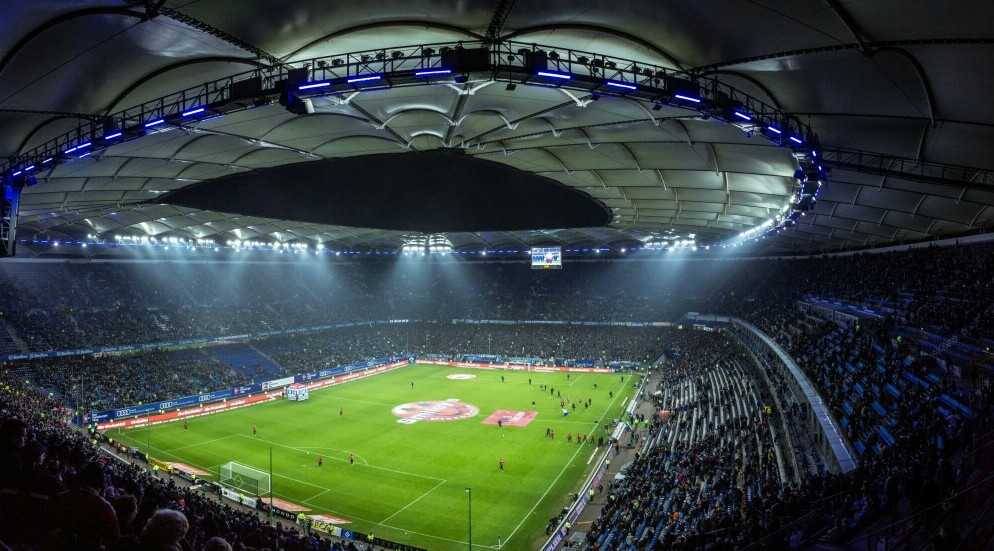 Soccer, also known as football in many parts of the world, isn’t merely a sport; it’s a global phenomenon that brings together people from all walks of life. I’m going to guide you through the reasons behind soccer’s incredible worldwide appeal.
Soccer, also known as football in many parts of the world, isn’t merely a sport; it’s a global phenomenon that brings together people from all walks of life. I’m going to guide you through the reasons behind soccer’s incredible worldwide appeal.
You might ask, ‘What makes soccer so special?’ Well, soccer’s magic lies in its simplicity and the minimal requirements to play. You just need a ball, some space, and a few friends. This accessibility is key to why kids in alleyways and world-class athletes in massive stadiums all share the same passion for the game.
Culturally, soccer has a deeply rooted significance in many countries. It’s more than a pastime—it’s woven into the social fabric, with clubs that are over a century old serving as community pillars.
Moreover, soccer is exceptionally inclusive. It doesn’t discriminate by age; whether you’re young or just young at heart, soccer offers something for everyone. From the thrill of playing to the excitement of watching, it’s a sport that harnesses communal energy and an unspoken language that transcends borders.
I’m here to help you understand not just the emotional allure of the game, but also the nuts and bolts that make it tick. And guess what? That starts with the very field the game is played on. In the next section, you’re going to find out about the layout of a soccer pitch, bringing you closer to the core of soccer’s captivating world.
The Soccer Pitch: Decoding the Playing Field
 Imagine stepping onto a vast expanse of lush green grass; this is the soccer pitch, a stage set for athletic prowess and strategic battles. You’re going to find out about the parameters that shape this fundamental aspect of soccer. Standard soccer pitches are rectangles with lengths typically ranging from 100 to 130 yards and widths stretching from 50 to 100 yards. These dimensions aren’t set in stone; they can vary, but always within the lines of international guidelines.
Imagine stepping onto a vast expanse of lush green grass; this is the soccer pitch, a stage set for athletic prowess and strategic battles. You’re going to find out about the parameters that shape this fundamental aspect of soccer. Standard soccer pitches are rectangles with lengths typically ranging from 100 to 130 yards and widths stretching from 50 to 100 yards. These dimensions aren’t set in stone; they can vary, but always within the lines of international guidelines.
When it comes to different areas of the pitch, each has a unique purpose. The penalty area, also known as the ’18-yard box’, is crucial for goalkeepers and spot-kicks during the game. The goal area, a smaller rectangle within the penalty box, is where goal kicks are taken. And then there’s the midfield, an area where much of the match’s ebb and flow is controlled. Don’t worry too much about remembering every line and circle; what’s important is recognizing how these markings govern the play.
Soccer isn’t just played on one type of surface; you’ll find natural grass, artificial turf, and hybrid systems. Each surface affects the ball’s speed and player performance. Grass pitches are traditional and widely preferred, but artificial turf allows play in virtually all weather conditions and requires less maintenance. Hybrids, combining natural grass and synthetic fibers, offer a balance between durability and a natural playing experience.
Now, this is where we segue to the dynamics of the game itself. Gameplay mechanics are the engine that drives the excitement of soccer. From the starting whistle, players engage in a battle to control the ball and score goals while defending their own. You’re about to delve into the crux of what makes a soccer match not just a spectator sport, but a global phenomenon.
Gameplay Mechanics: How Soccer is Played
I’m going to walk you through the heartbeat of soccer: how it’s played. When you’re watching a game, the underlying objective is simple: score more goals than the opposition. It all begins with a kick-off from the center spot after a coin toss decides the initial positions of the teams.
Each team has ten outfield players and one goalkeeper. The outfielders are divided into defenders, midfielders, and forwards, each with a unique role. Defenders shield the goal, midfielders orchestrate play, and forwards are the main attackers aiming to score.
Substitutions are a crucial strategic element, with teams typically allowed FIVE per match. But this isn’t the only thing to watch for. Fouls can lead to free kicks or penalty kicks, and persistent rule-breaking may result in yellow or red cards.
Now, offsides can be a tricky concept. A player is offside if they are nearer to the opponent’s goal line than the ball at the time the ball is played to them, and there are not at least two opponents between them and the goal. Think of it as a way to keep the challenge fair and prevent players from just camping near the goal.
Free kicks come in two flavors: direct and indirect. A direct kick can be shot on goal, while an indirect one needs to touch another player before a goal can be scored. A corner kick is awarded when the ball goes over the goal line but wasn’t scored, and the last touch was by a defender.
In my opinion, while the rules are essential, they’re here to shape the game, not to stifle the creativity and strategy that make soccer the beautiful game. Fair play is key, and that’s going to be at the heart of our next section on sportsmanship and teamwork. So, you can always adjust your approach to appreciate the tactics beyond the basics.
Fostering Sportsmanship and Teamwork
I’m going to wrap this up by highlighting one of the most beautiful aspects of soccer: its power to unite. This isn’t just about winning or showcasing individual skills; soccer is also about fostering sportsmanship and teamwork. These are fundamental values that make the sport truly stand out.
On the pitch, teamwork is the engine that propels the game forward. Players must communicate, collaborate, and trust one another to succeed. It’s a dance of coordination where every pass and play requires a shared vision. Choose something that resonates with you, be it the group dynamics or the personal growth that comes from it.
I’m here to help you understand that respect is pivotal in soccer. It’s respect for your teammates, your opponents, the referees, and the rules of the game. This respect cultivates an environment where fair play thrives and where the spirit of the game shines.
Soccer isn’t just a test of your physical abilities; it’s a strategic battle too. You develop not just your body, but also your mind. You learn about patience, strategy, and resilience. Your first attempt at mastering soccer skills doesn’t need to be your last. Improvement is a continuous journey.
In my opinion, if you’re considering engaging with soccer—whether as a player, a coach, or a fan—you’re not only joining a sport. You’re becoming part of a global community that cherishes teamwork, discipline, and respect. Remember, you can always adjust your approach down the road, but the values and joy from playing soccer remain constant.
I really hope that you’ve found this introduction to soccer both informative and inspiring. If you want to continue exploring the exciting world of soccer, there’s a lot of opportunity in joining local clubs, watching games, and playing with friends. A lot is happening very quickly in the world of soccer, and there’s always room for one more on the team.

Thank you for this clear and concise introduction to soccer rules and game basics! As someone with experience playing the sport, I really appreciate how you’ve broken down the fundamentals in a way that’s approachable for newcomers while still being a solid refresher for those of us familiar with the game.
Your explanations of positions and gameplay strategy are particularly well done and would be valuable for anyone looking to deepen their understanding of soccer. I’ll definitely be recommending this article to friends who are just starting out. Great work on creating such an engaging and informative resource!
Thank you I really appreciate it
This article serves as an excellent guide for anyone looking to understand football. It outlines key rules and game concepts, making it easy for beginners to grasp. The explanations of how the game is played is particularly helpful.
From my experience, having a foundational knowledge of the rules (Through my husband and children) can transform how you enjoy watching matches or playing with friends. It makes discussions more engaging and boosts confidence when participating in games. Overall, this introduction provides valuable insights that enhance both appreciation and enjoyment of football!
thanks Nikki, thank so much . We are really appreciate it